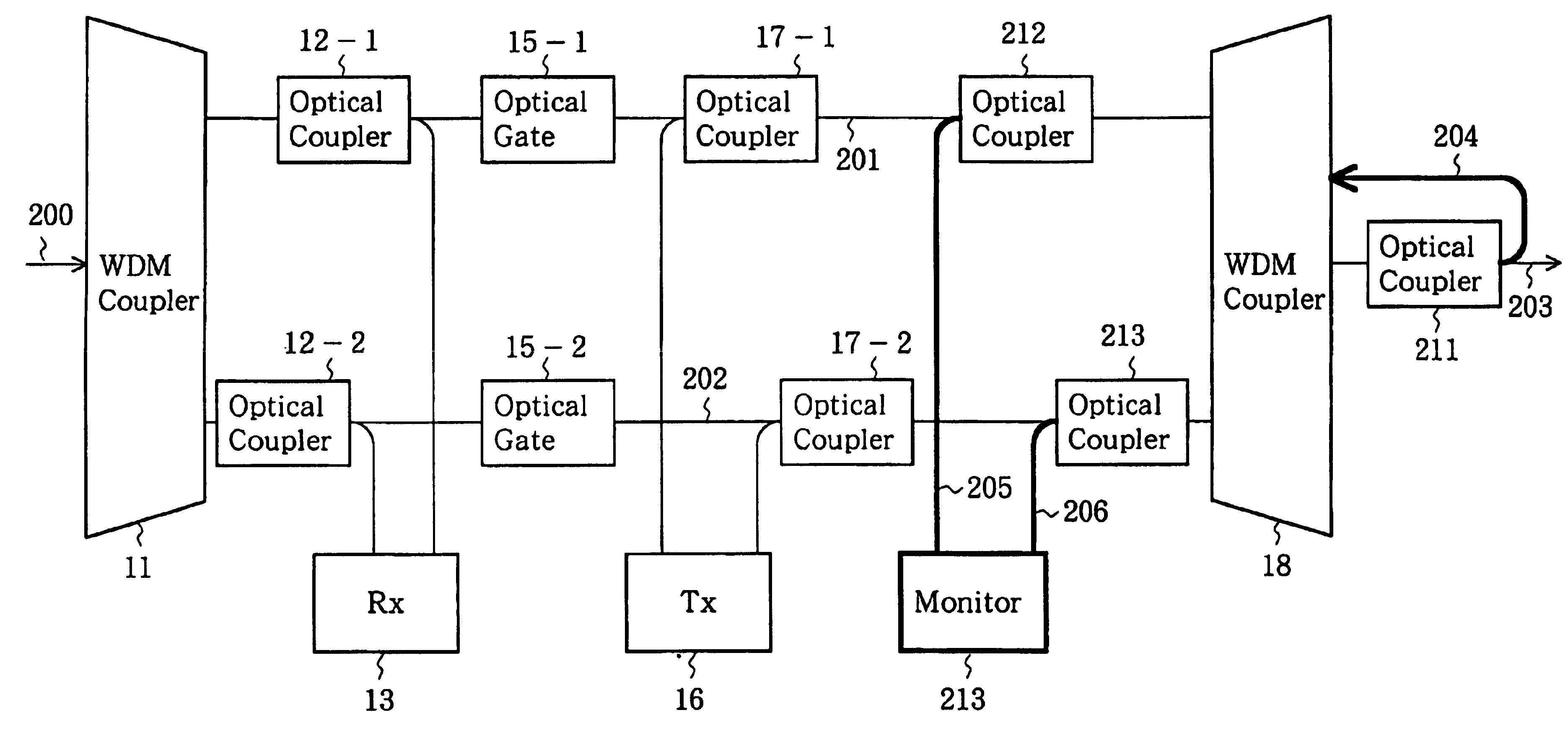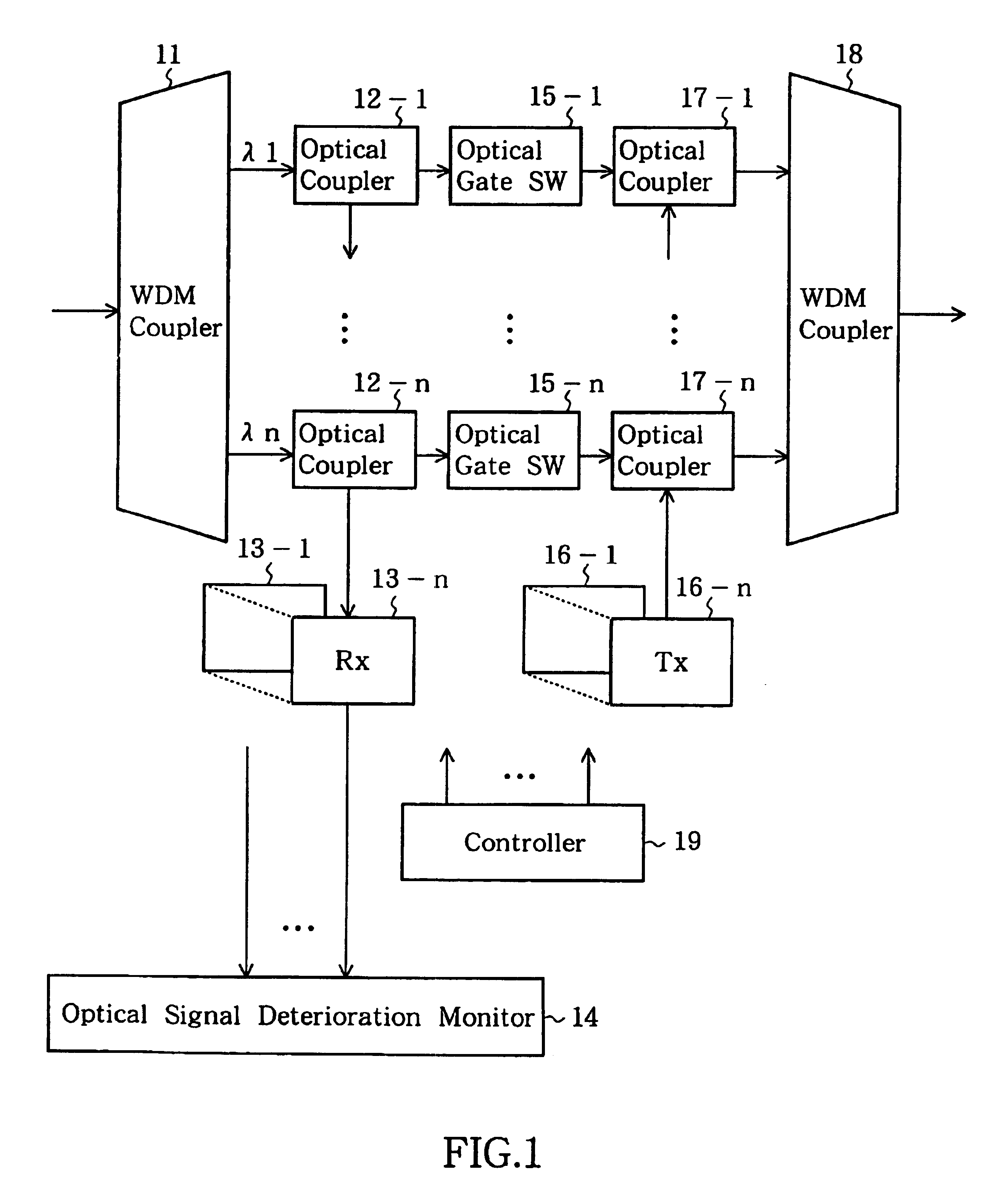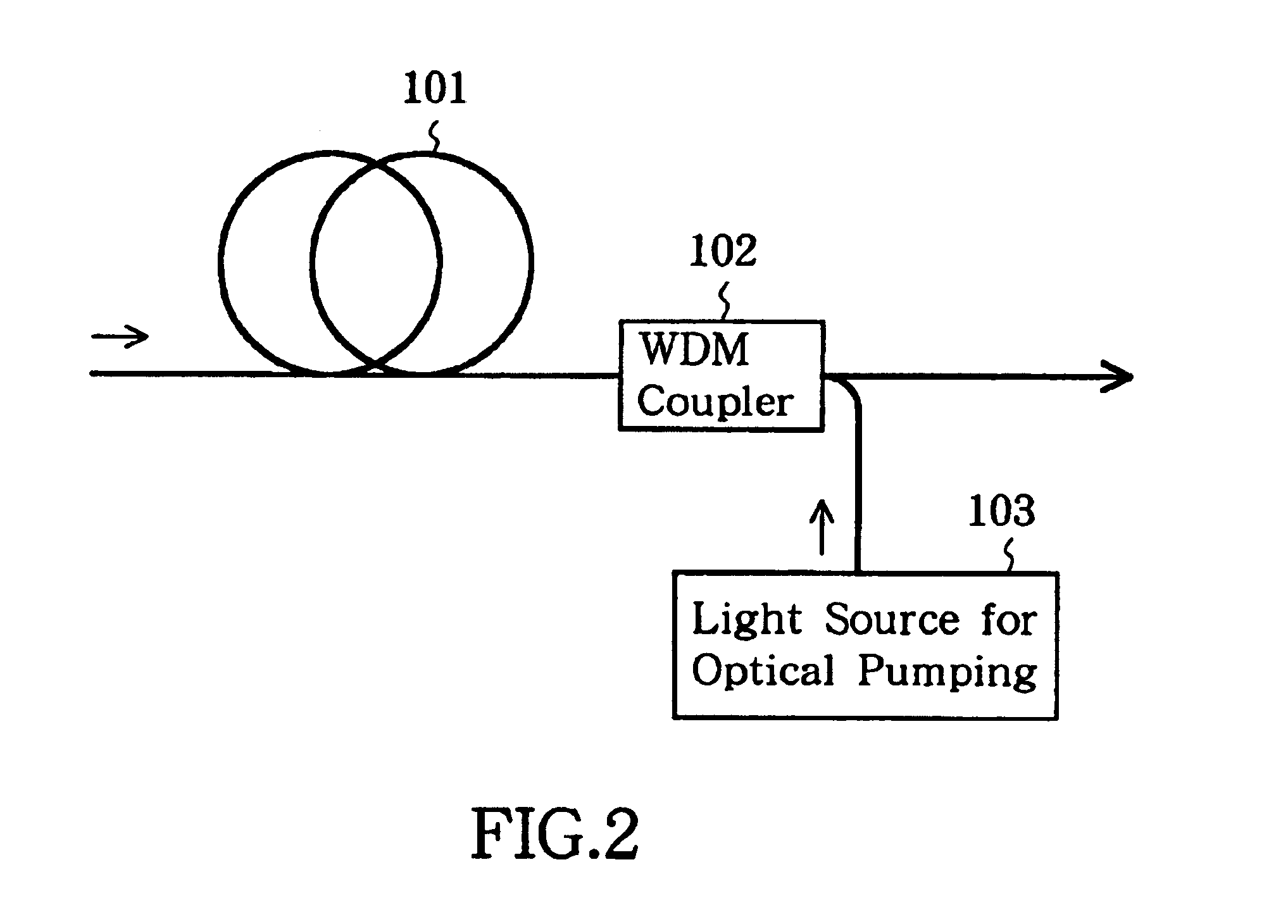Optical add-drop multiplexer
a multiplexer and optical technology, applied in multiplex communication, transmission monitoring, instruments, etc., can solve the problems of degrading the s/n ratio, output saturation, receiving sensitivity degrading, etc., and achieve the effect of reducing the cost and size of the oadm nod
- Summary
- Abstract
- Description
- Claims
- Application Information
AI Technical Summary
Benefits of technology
Problems solved by technology
Method used
Image
Examples
first embodiment
[0082]An OADM shown in FIG. 1 constitutes a node in a network and, in order to drop (branch) / add (insert) wavelength light signals of a wavelength-multiplexed light in this node, respectively, includes an optical wavelength division coupler 11 for wavelength-dividing a wavelength-multiplexed light to wavelength lights having different wavelengths, optical couplers 12-1 to 12-n, light receivers 13-1 to 13-n, an optical signal deterioration monitor 14, optical gate switches 15-1 to 15-n, light transmitters 16-1 to 16-n, optical couplers 17-1 to 17-n, a controller 19 and an optical wavelength multiplex coupler 18 for wavelength-multiplexing lights having different wavelengths. The optical wavelength division coupler 11 and the optical wavelength multiplex coupler 18 are constituted by using array waveguide diffraction gratings, respectively. The optical couplers 12-1 to 12-n, the light receivers 13-1 to 13-n, the optical gate switches 15-1 to 15 n, the light transmitters 16-1 to 16-n ...
second embodiment
[0092]the present invention will be described with reference to FIG. 3 The OADM of this embodiment is constructed with an optical WDM coupler 21, optical couplers 22-1 to 22-n bi-directionally connected to the optical WDM coupler 21, light receivers 23-1 to 23-n connected to outputs of the respective optical couplers 22-1 to 22-n, light transmitters 24-1 to 24-n, optical couplers 25-1 to 25-n bi directionally connected to the respective optical couplers 22-1 to 22-n and receiving outputs of the respective light transmitters 24-1 to 24-n, optical gate switches 26-1 to 26-n bi-directionally y connected to the respective optical couplers 25-1 to 25-n, reflection mirrors 27-1 to 27 n bi-directionally connected to the respective optical couplers 26-1 to 26-n, a circulator 28 and a controller 29.
[0093]The second embodiment differs from the first embodiment in that the wavelength-multiplexed input light is input through the circulator 28 to the optical WDM coupler 21, that signal lights ha...
third embodiment
[0095]In a case where the OADM allows a signal light having wavelength λ1 to pass, the signal light is derived by the optical WDM coupler 21 and, after passed through the optical couplers 22-1 and 25-1 and the optical gate switch 26-1, reflected by the reflection mirror 27-1. The signal light reflected by the reflection mirror 27-1 passes through the optical gate switch 26-1 and the optical couplers 25-1 and 22-1 to the optical WDM coupler 21 and is output from the optical circulator 28. When the signal having wavelength λ1 is to be dropped or added, the optical gate switch 26-1 is turned off under control of the controller 29 to cut the passage between the optical coupler 25-1 and the reflection mirror 27-1 and to input the signal light having wavelength λ1 from the light transmitter 24-1 to the optical WDM coupler 21 through the optical couplers 25-1 and 22-1. This is the same for signal lights of other wavelengths λ2 to λn. The light which is obtained by the wavelength multiplexi...
PUM
 Login to View More
Login to View More Abstract
Description
Claims
Application Information
 Login to View More
Login to View More - R&D
- Intellectual Property
- Life Sciences
- Materials
- Tech Scout
- Unparalleled Data Quality
- Higher Quality Content
- 60% Fewer Hallucinations
Browse by: Latest US Patents, China's latest patents, Technical Efficacy Thesaurus, Application Domain, Technology Topic, Popular Technical Reports.
© 2025 PatSnap. All rights reserved.Legal|Privacy policy|Modern Slavery Act Transparency Statement|Sitemap|About US| Contact US: help@patsnap.com



